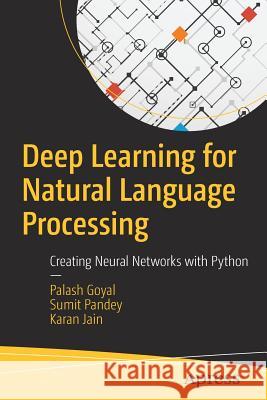Deep Learning for Natural Language Processing: Creating Neural Networks with Python » książka
topmenu
Deep Learning for Natural Language Processing: Creating Neural Networks with Python
ISBN-13: 9781484236840 / Angielski / Miękka / 2018 / 277 str.
Kategorie:
Kategorie BISAC:
Wydawca:
Apress
Język:
Angielski
ISBN-13:
9781484236840
Rok wydania:
2018
Ilość stron:
277
Waga:
0.41 kg
Wymiary:
23.39 x 15.6 x 1.57
Oprawa:
Miękka
Wolumenów:
01
Dodatkowe informacje:
Wydanie ilustrowane











